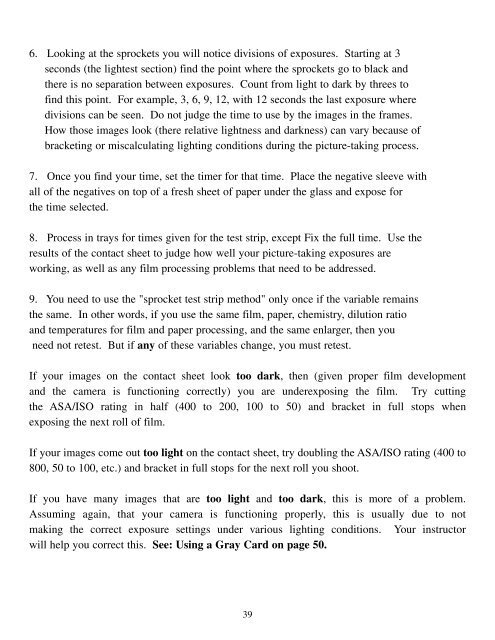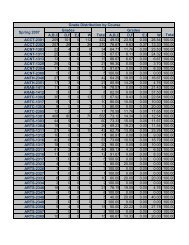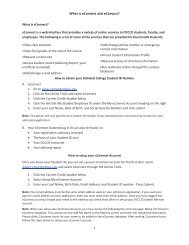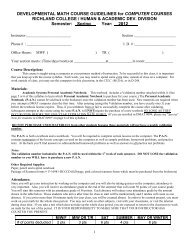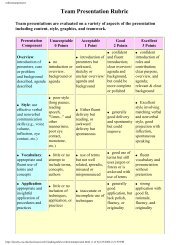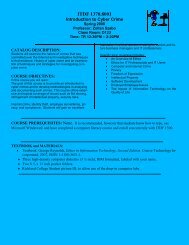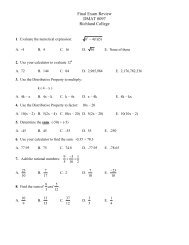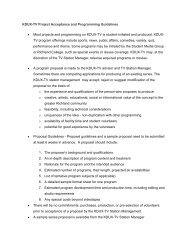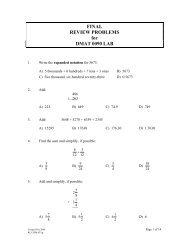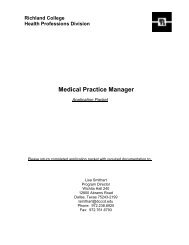Photo Lab Manual (PDF) - Richland College
Photo Lab Manual (PDF) - Richland College
Photo Lab Manual (PDF) - Richland College
You also want an ePaper? Increase the reach of your titles
YUMPU automatically turns print PDFs into web optimized ePapers that Google loves.
6. Looking at the sprockets you will notice divisions of exposures. Starting at 3seconds (the lightest section) find the point where the sprockets go to black andthere is no separation between exposures. Count from light to dark by threes tofind this point. For example, 3, 6, 9, 12, with 12 seconds the last exposure wheredivisions can be seen. Do not judge the time to use by the images in the frames.How those images look (there relative lightness and darkness) can vary because ofbracketing or miscalculating lighting conditions during the picture-taking process.7. Once you find your time, set the timer for that time. Place the negative sleeve withall of the negatives on top of a fresh sheet of paper under the glass and expose forthe time selected.8. Process in trays for times given for the test strip, except Fix the full time. Use theresults of the contact sheet to judge how well your picture-taking exposures areworking, as well as any film processing problems that need to be addressed.9. You need to use the "sprocket test strip method" only once if the variable remainsthe same. In other words, if you use the same film, paper, chemistry, dilution ratioand temperatures for film and paper processing, and the same enlarger, then youneed not retest. But if any of these variables change, you must retest.If your images on the contact sheet look too dark, then (given proper film developmentand the camera is functioning correctly) you are underexposing the film. Try cuttingthe ASA/ISO rating in half (400 to 200, 100 to 50) and bracket in full stops whenexposing the next roll of film.If your images come out too light on the contact sheet, try doubling the ASA/ISO rating (400 to800, 50 to 100, etc.) and bracket in full stops for the next roll you shoot.If you have many images that are too light and too dark, this is more of a problem.Assuming again, that your camera is functioning properly, this is usually due to notmaking the correct exposure settings under various lighting conditions. Your instructorwill help you correct this. See: Using a Gray Card on page 50.39


